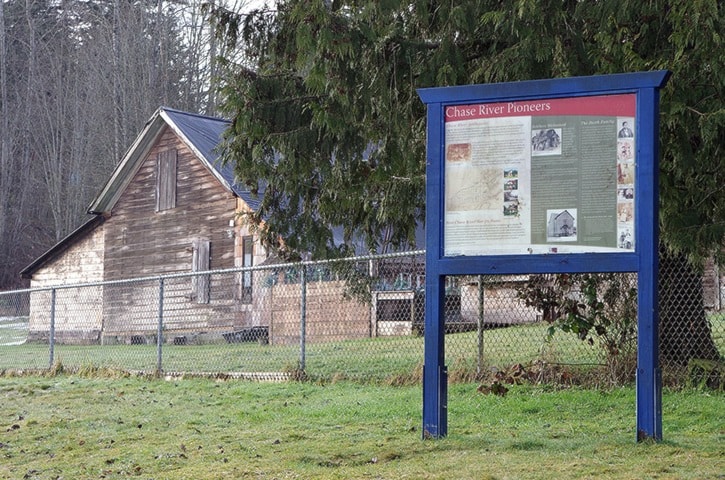If an old barn in Chase River could talk, it might be able to clear up a few things, such as who designed it, who built it and maybe even who actually owned it over the past 140 years.
Stark’s Barn, according to the City of Nanaimo Heritage Register, was built in 1880. It stands in the back yard of a home at 1526 Extension Rd., just over the fence from Chase River Elementary School’s play field.
The barn takes its name from Louis Stark, a black man originally from Louisville, Ky., who came to the Island by way of California in the 1870s looking for a place where he and his family could live in freedom.
Stark bought property on Salt Spring Island and a large section of land he farmed in Chase River. A large interpretive sign and a stone monument bearing a plaque with the Stark family are installed on the school grounds.
But, the construction date is a guess.
“It’s basically a guess-timate on the date based on the records we had on the Stark family,” said Chris Sholberg, city culture and heritage planner.
Nor are there any known records pointing to who designed and built the barn or even any that say with certainty Stark even owned that property, according to Christine Meutzner, Nanaimo Community Archives manager.
“We have evidence he had property way up by Extension, but we have no evidence he had that property right where the barn is,” Meutzner said. “There’s a Starks [railway] crossing near there, so I think it’s possible that people, by extension, just ended up calling it Stark’s barn. We’ve never been able to say definitively that was Stark’s barn.”
Shalema Gantt, president of the Nanaimo African Heritage Society, said Stark owned several properties in the area, including property up near the E&N Railway line. His wife, Sylvia, lived part time on Salt Spring Island and part time in Chase River.
According to the city heritage register, their daughter, Emily, became the first teacher at North Cedar School, a significant achievement for a black woman in 19th century British Columbia.
Stark had coal reserves on his property and was allegedly murdered in 1895 – possibly pushed off a cliff, according to a story passed on to Gantt – while walking home from playing cards with friends late one night.
“Apparently the Dunsmuirs were blamed for the murder because at the time [Robert] Dunsmuir wanted to buy the land from him for coal digging, so there was a big mystery,” Gantt said.
Nadine Simms, Stark’s great great granddaughter, might have been able to shed light on the barn, Gantt said, but she died in September. Simms was 95.
“It’s not to say that it isn’t the Stark’s Barn,” Meutzner said. “I just can’t prove it.”
